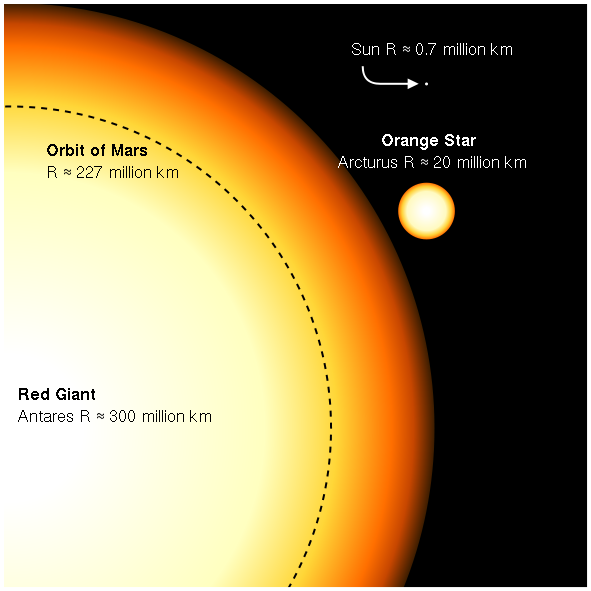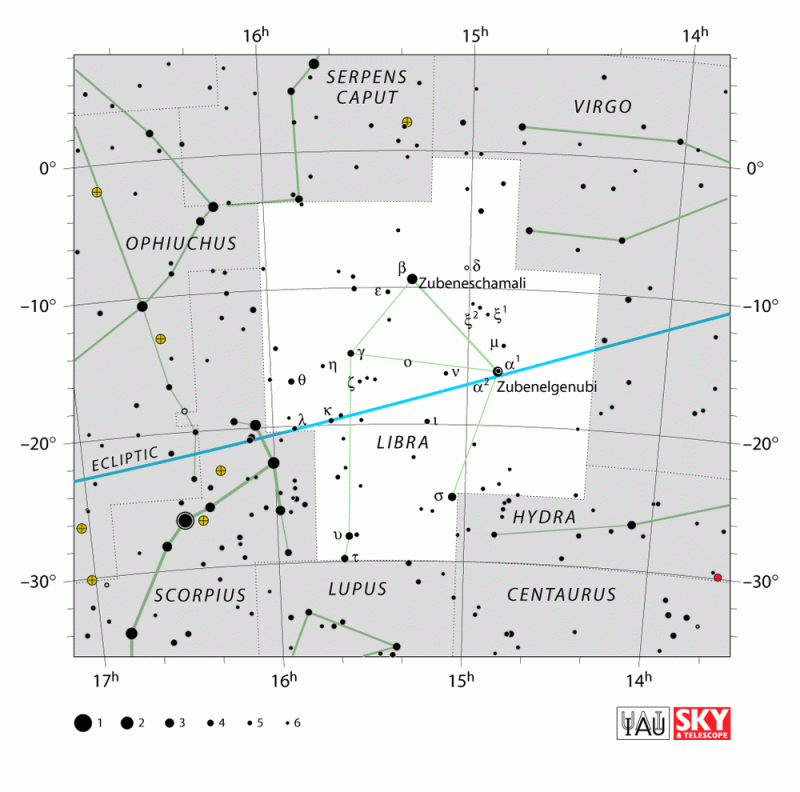As darkness falls on September 3 and 4, 2019, watch for the waxing crescent moon to travel in front of the constellation Libra the Scales, past Libra’s alpha star Zubenelgenubi and famous green star Zubeneschamali. Then, as the moon continues going eastward in its orbit around Earth, it’ll sweep up toward the star Antares – the Heart of the Scorpion in Scorpius and a red supergiant star – and the very bright planet Jupiter.
The moon will sweep to the north of Antares and Jupiter on or near September 5, 2019.
Visit Heavens-Above to find out which constellation presently backdrops the moon
If your western sky is clear after sunset, you should have little trouble spotting the brightest of these objects at dusk. The moon and Jupiter will be the brightest objects you’ll see in the western twilight sky. After all, the moon ranks as the second-brightest celestial body to light up the heavens, after the sun; and Jupiter is the fourth-brightest celestial body, after the planet Venus. However, Venus is now lost in the sun’s glare, so Jupiter reigns supreme as the evening “star” throughout September 2019.
Antares should be relatively easy to spot, too. Watch for it to pop out in the deepening evening twilight in the vicinity of Jupiter. Although Antares serves as a prime example of a respectably bright 1st-magnitude star, this star pales next to Jupiter, which outshines Antares by nearly 20 times.

Libra’s two brightest stars – Zubenelgenubi and Zubeneschamali – are fainter and will be tougher to see. On or near September 3, the moon swings to the north of the star Zubenelgenubi and to the south of the star Zubeneschamali. If need be, use binoculars to sweep around the moon that night, to reel in these two Libra stars. They are only modestly bright, some four to five times fainter than the 1st-magnitude star Antares. As the sky darkens, though, Libra’s two brightest stars should become visible to the eye alone, briefly, before they follow the sun below the western horizon.
And while you’re at it, take a good look at Zubenelgenubi with binoculars, and you’ll see that it’s a double star. Sometimes, a double star consists of two physically unrelated stars that lie along the same line of sight. But in this case, Zubenelgenubi is thought to be a true binary star – two stars orbiting a common center of mass.
Zubenelgenubi is easily split into its two component stars with ordinary binoculars, even though this binary star is 77 light-years away. The two stars in this binary system reside at a mean distance of approximately 5,500 astronomical units (AU) apart (one AU = sun/Earth distance). The orbital period may be as long as 200,000 years. The cool thing about any binary star is that you can find out its mass, if you know how far apart the two component stars are and how long they take to orbit one another.
How a binary star reveals its mass

The combined mass of the two stars in a binary system can be computed (in solar masses) if you know their mean distance apart (in astronomical units) and their orbital period (in Earth-years). Although the mean distance and orbital period of this binary star aren’t known with precision, we’ll assume a mean distance of 5,500 AU, and an orbital period of 200,000 years.
We can use the equation below to figure out the mass of Zubenelgenubi, the binary star, in solar masses, where a = mean distance = 5,500 AU, and p = orbital period = 200,000 years:
Mass = a3/p2
Mass = 5,500 x 5,500 x 5,500/200,000 x 200,000
Mass = 166,380,000,000/40,000,000,000
Mass = 4.159 solar masses
Bottom line: As darkness falls these next few evenings – September 3, 4 and 5, 2019 – watch for the waxing crescent moon traveling in front of the constellation Libra the Scales. The moon heads eastward, as it always does in its orbit around Earth. It’ll sweep past the star Zubenelgenubi, then head toward the red star Antares and bright planet Jupiter.











